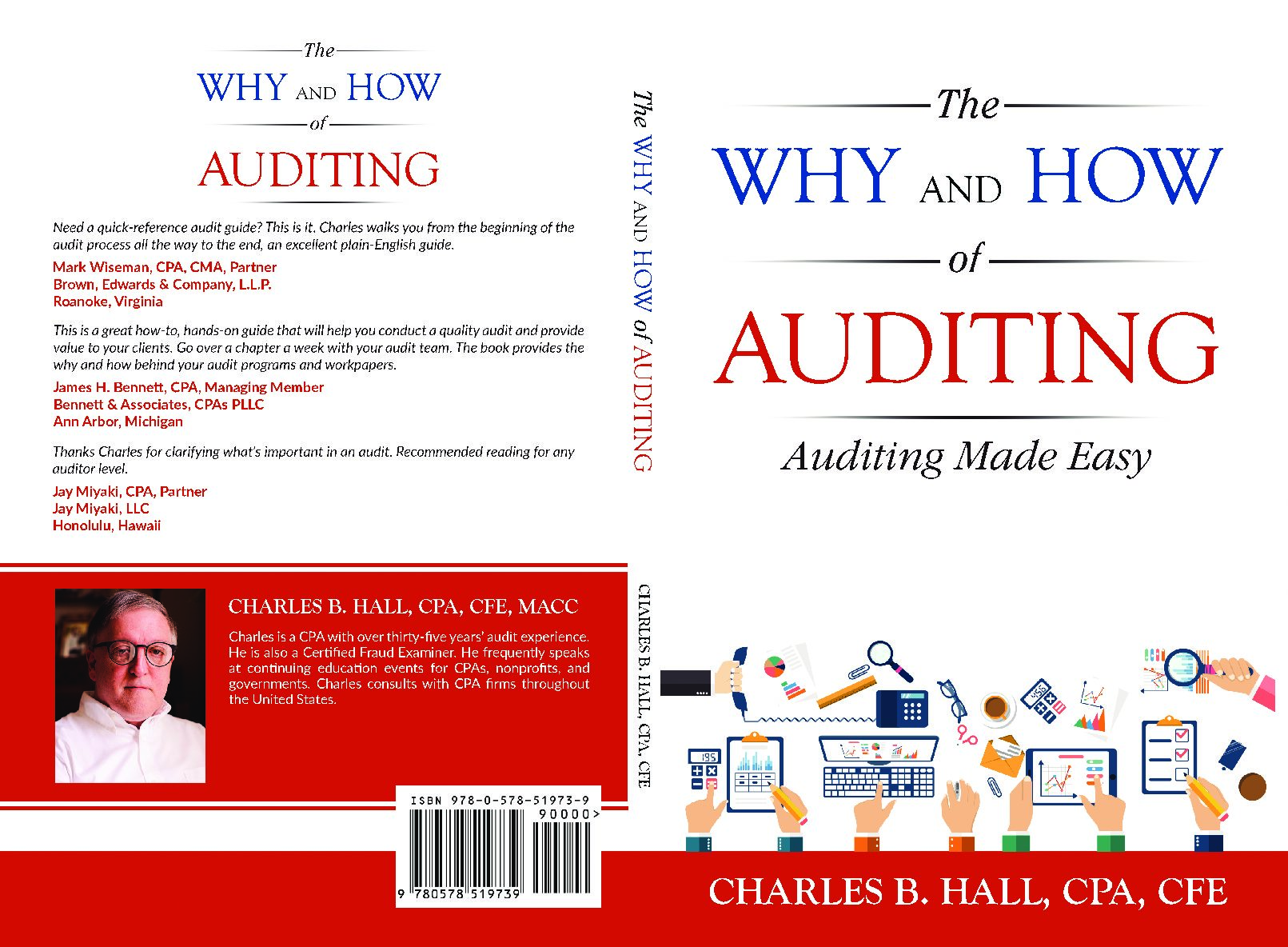
Auditing cash tends to be straightforward. We usually just obtain the bank reconciliations and test them. We send confirmations and vouch the outstanding reconciling items to the subsequent month’s bank statement. But are such procedures always adequate? Hardly.
Recall the Parmalat and ZZZZ Best Carpet Cleaning frauds. In those businesses, the theft of cash was covered up with fake bank statements and fake confirmation responses. Millions were lost and reputations we’re sullied.
In this post, we will take a look auditing cash including:
The primary relevant cash assertions are:

Of these assertions, I believe existence, accuracy, and cutoff are most important. The audit client is asserting that the cash balance exists, that it’s accurate, and that only transactions within the period are included.
Classification is normally not a relevant assertion. Cash is almost always a current asset. But when bank overdrafts occur, classification can be in play. The negative cash balance can be presented as cash or as a payable depending on the circumstances.
As we perform walkthroughs of cash, we normally look for ways that cash might be overstated (though it can also be understated as well). We are asking, “What can go wrong?” whether intentionally or by mistake.

In performing cash walkthroughs, ask questions such as:
As we ask questions, we also inspect documents (e.g., bank reconciliations) and make observations (who is doing what?).
If controls weaknesses exist, we create audit procedures to address them. For example, if during the walkthrough we review three monthly bank reconciliations and they all have obvious errors, we will perform more substantive work to prove the year-end bank reconciliation. For example, we might vouch every outstanding deposit and disbursement.
What is directional risk in auditing cash? It’s the potential bias that a client has regarding an account balance. A client might desire an overstatement of assets and an understatement of liabilities since each makes the balance sheet appear healthier.
The directional risk for cash is overstatement. So, in performing your audit procedures, perform procedures such as testing the bank reconciliation to ensure that cash is not overstated.
The primary risks are:

In smaller entities, it is common to have the following control deficiencies:
In my smaller audit engagements, I usually assess control risk at high for each assertion. If control risk is assessed at less than high, then controls must be tested to support the lower risk assessment. Assessing risks at high is usually more efficient than testing controls.
When control risk is assessed at high, inherent risk becomes the driver of the risk of material misstatement (control risk X inherent risk = risk of material misstatement). For example, if control risk is high and inherent risk is moderate, then my RMM is moderate.
The assertions that concern me the most are existence, accuracy, and cutoff. So my RMM for these assertions is usually moderate to high.
My response to higher risk assessments is to perform certain substantive procedures: namely, bank confirmations and testing of the bank reconciliations. As RMM increases I examine more of the period-end bank reconciliations and more of the outstanding reconciling items. Also, I am more inclined confirm the balances.
A common mistake is for auditors to document the risk assessment for all assertions together, like this:
| Assertion | Inherent Risk | Control Risk | Risk of Material Misstatement |
| E/O; CU; R/O; A/V; P/D | High | High | High |
It is best to assess risk for each individual assertion. For example, if existence, accuracy, and cutoff are relevant assertions, you would have a row for each of the three assertions.
My customary audit tests are as follows:
The auditor should send confirmations directly to the bank. Some individuals create false bank statements to cover up theft. Those same persons provide false confirmation addresses. Then the confirmation is sent to an individual (the fraudster) rather than a bank. Once received, the fraudster replies to the confirmation as though the bank is doing so. You can lessen the chance of fraudulent confirmations by using Confirmation.com, a company that specializes in bank confirmations. Alternatively, you might Google the confirmation address to verify its existence.
Agree the confirmed bank balance to the period-end bank reconciliation (e.g., December 31, 20X7). Then, agree the reconciling items on the bank reconciliation to the bank statement subsequent to the period-end. For example, examine the January 20X8 bank statement activity when clearing the December 20X7 reconciling items. Finally, agree the reconciled balance to the general ledger cash balance for the period-end (e.g., December 31, 20X7).
Cut-off bank statements (e.g., January 20, 20X8 bank statement) may be used to test the outstanding items. Such statements, similar to bank confirmations, are mailed directly to the auditor. Alternatively, the auditor might examine the reconciling items by viewing online bank statements. (Read-only rights can be given to the auditor.)
My cash work papers normally include the following:
We’ve discussed how to perform cash risk assessment procedures, the relevant cash assertions, the cash risk assessments, and substantive cash procedures.
Next we’ll examine how to audit receivables and revenues.
Click the book below to see it on Amazon.

Click the book cover to see The Why and How of Auditing on Amazon.